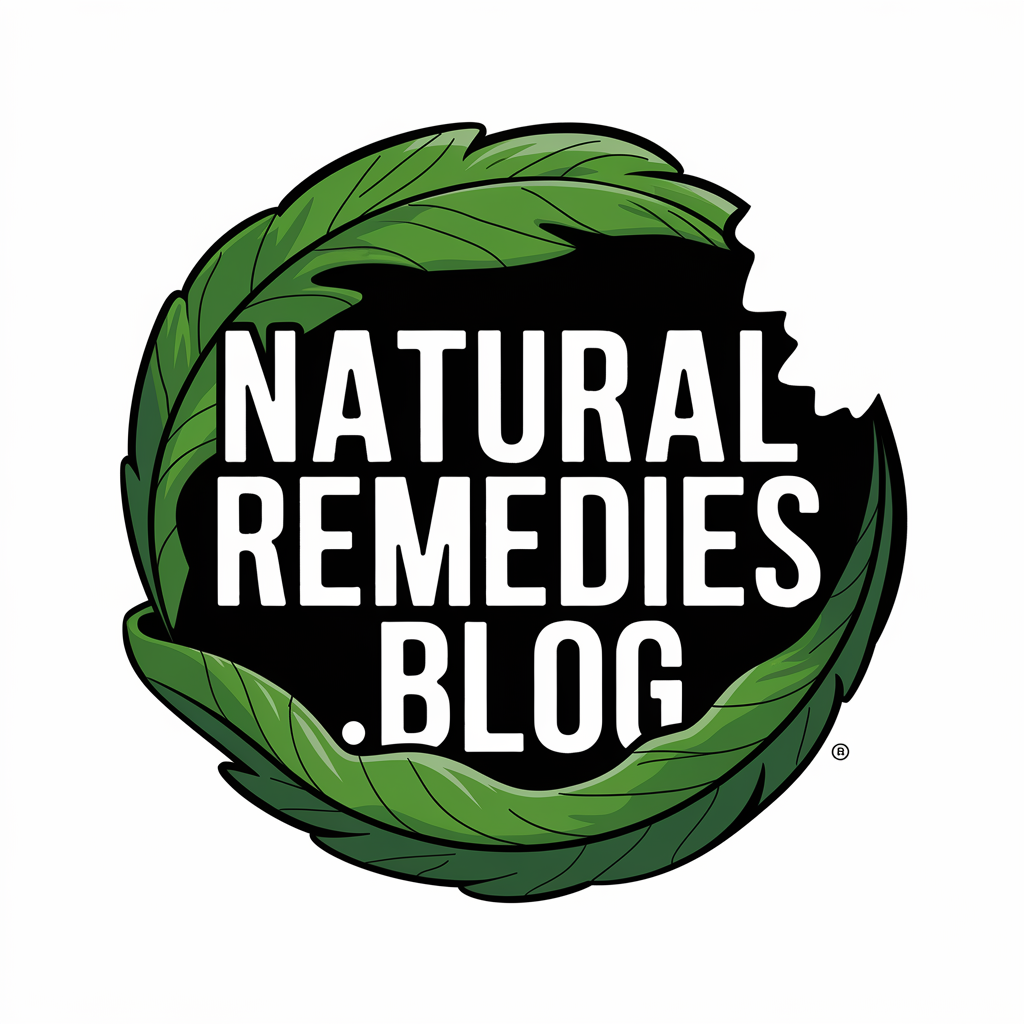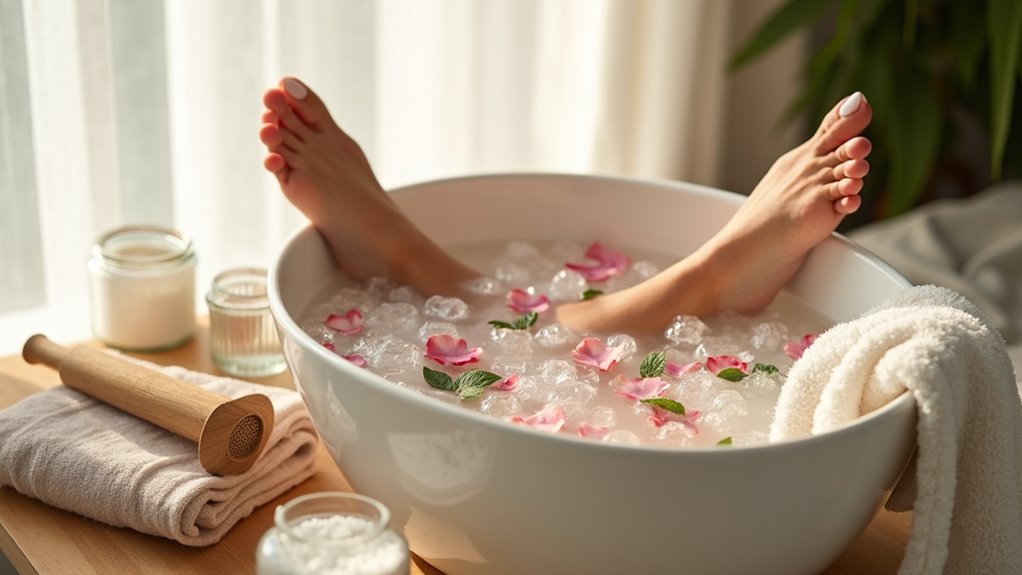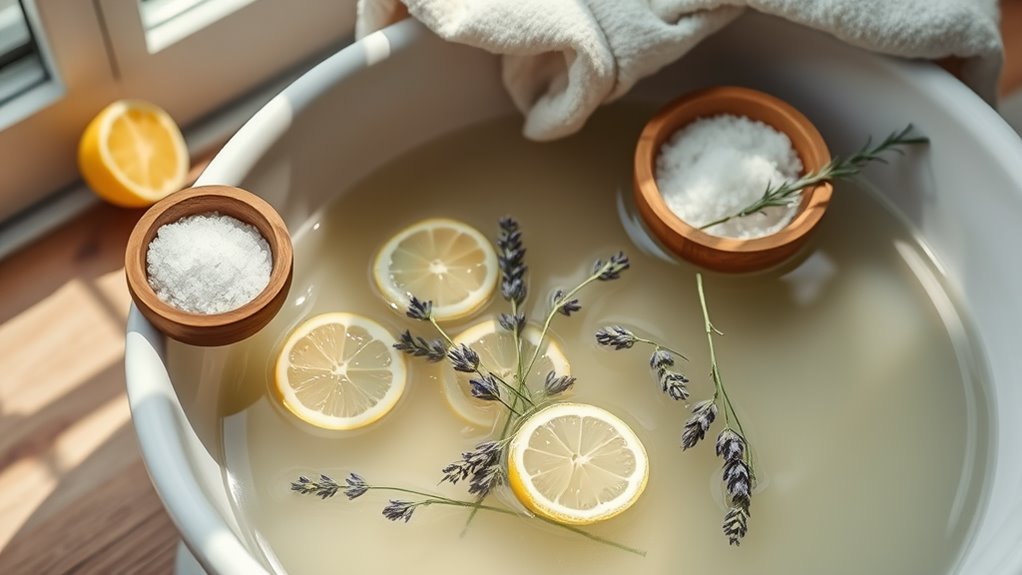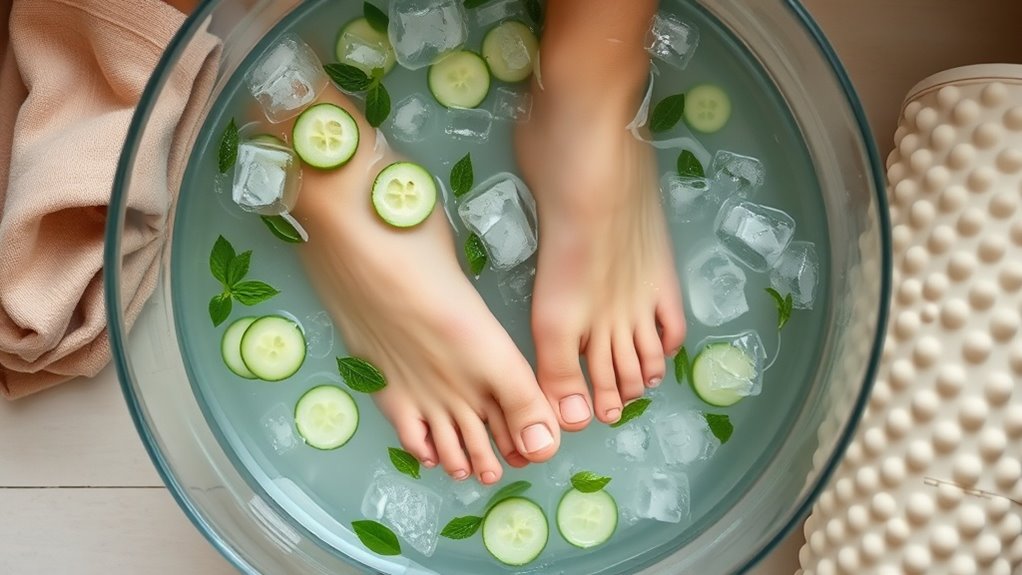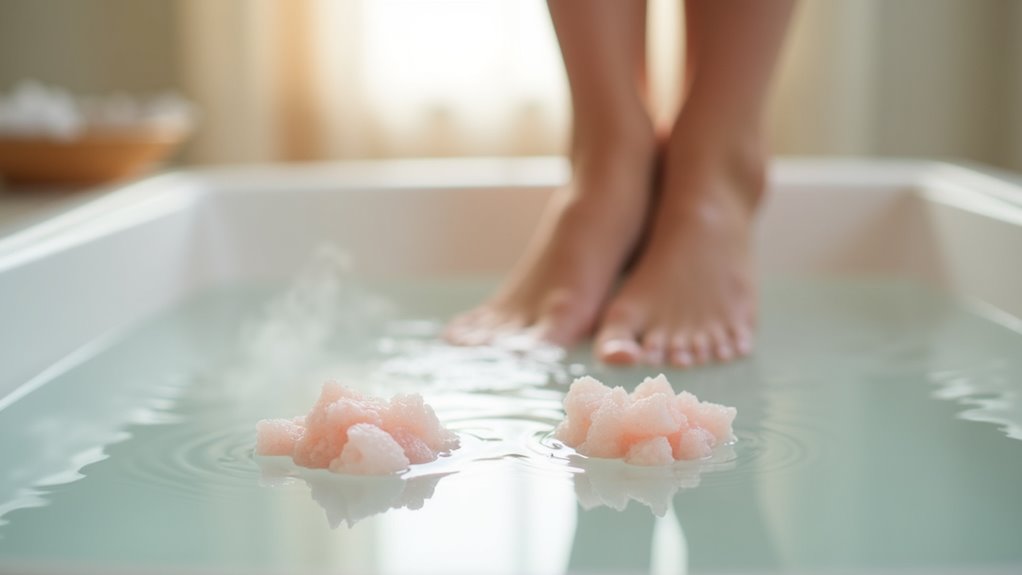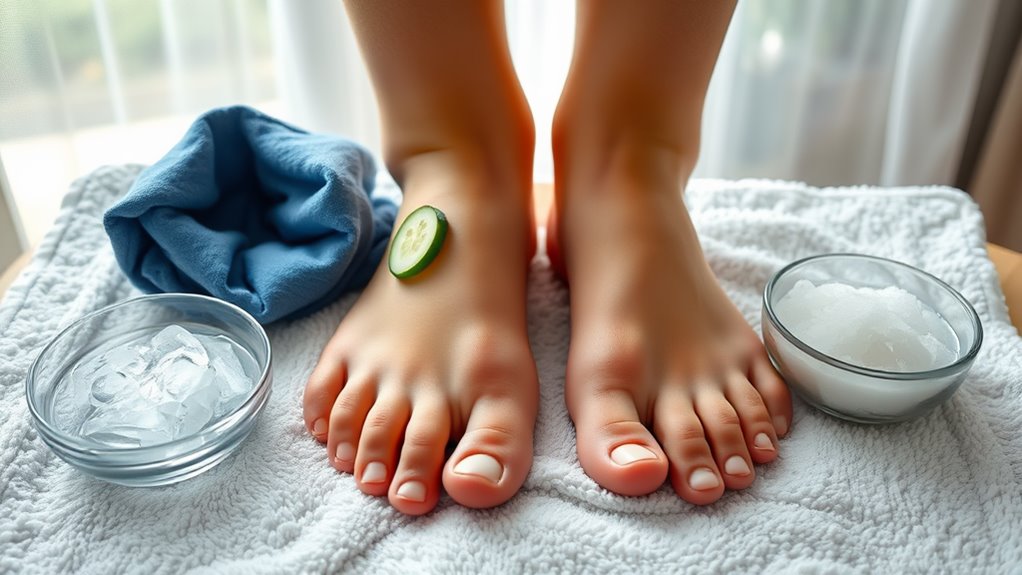Swollen Feet Remedies You’ll Wish You Knew Sooner
You can reduce peripheral edema in your feet through targeted interventions that improve circulation and decrease fluid retention. Start by elevating your feet above heart level for 15-20 minutes, three times daily, while performing ankle flexions. Apply contrast therapy using alternating cold and hot treatments, and activate key pressure points like Tai Chong and Kidney 1. For enhanced results, combine these techniques with specific dietary modifications and massage protocols outlined below.
What Causes Swollen Feet?
When fluid accumulates in the tissues of your feet, a condition known as peripheral edema occurs, leading to noticeable swelling.
You might experience this due to prolonged standing, pregnancy, or underlying medical conditions like heart, kidney, or liver disease. Blood clots, lymphatic system issues, and certain medications can also trigger swelling.
Before pursuing swollen feet remedies, it’s crucial to identify the root cause. If you’re experiencing sudden or severe swelling, especially in one foot, seek immediate medical attention.
Chronic swelling may indicate a serious condition that requires professional evaluation, particularly when accompanied by chest pain or breathing difficulties.
Hot weather can worsen foot swelling as blood vessels expand to help regulate body temperature.
Simple Elevation Techniques for Quick Relief
Looking to reduce foot swelling quickly? Elevating your feet above heart level helps decrease hydrostatic pressure and promotes fluid drainage through your lymphatic system.
Position yourself on your back and prop your legs at a 45-degree angle using firm pillows or a wedge cushion.
For optimal results, maintain elevation for 15-20 minutes, three times daily. While elevated, flex your ankles and rotate your feet to activate your calf muscles, which act as natural pumps to move excess fluid.
During sleep, place 6-inch blocks under the foot of your bed to maintain a gentle elevation throughout the night.
If swelling persists, consider adding Epsom salt soaks to your elevation routine for enhanced fluid reduction.
Cold and Hot Therapy Methods
Temperature therapy offers another effective approach to managing foot swelling. You’ll find that alternating between cold and hot treatments can effectively reduce edema and improve circulation in your lower extremities.
Poor circulation can be a major contributing factor to swollen feet, making proper temperature therapy essential.
| Treatment | Application Method |
|---|---|
| Cold Pack | 15-20 mins on affected area |
| Ice Bath | 10-15 mins foot immersion |
| Warm Compress | 15-20 mins on affected area |
| Warm Soak | 15-20 mins with Epsom salt |
| Contrast Bath | Alternate 3 mins hot, 1 min cold |
Apply cold therapy first to reduce inflammation and constrict blood vessels. Follow with heat to promote circulation and fluid drainage. Remember to wrap ice packs in a thin towel to protect your skin, and test water temperature before immersion.
Essential Stretches and Exercises
To effectively reduce foot swelling, specific stretches and exercises can strengthen the muscles that support circulation while promoting fluid movement in your lower extremities.
Perform ankle circles by rotating each foot clockwise and counterclockwise for 30 seconds. Next, flex your toes upward, then point them down, engaging your plantar fascia.
Practice calf raises by standing on a step’s edge, lifting your heels, then lowering them below the step’s level. Roll a tennis ball under your arch to stimulate circulation.
Finally, stretch your Achilles tendon by lunging forward while keeping your back leg straight and heel planted.
Combining these exercises with elevated feet positioning for 15-20 minutes afterwards helps maximize circulation benefits.
Natural Herbal Remedies and Solutions
You can effectively reduce pedal edema through targeted herbal treatments, including soaking your feet in chamomile or peppermint tea solutions for 15-20 minutes.
For enhanced therapeutic benefit, you’ll want to prepare hot herbal compresses using calendula or rosemary, applying them directly to your swollen feet and ankles.
These natural remedies work by improving circulation and reducing fluid retention in your lower extremities, particularly in the plantar and dorsal regions of your feet.
Combining herbal remedies with compression sock therapy provides optimal relief from swelling throughout the day.
Soothing Tea Soaks
Natural herbal tea soaks provide effective relief for swollen feet by combining the therapeutic properties of warm water immersion with medicinal plant compounds.
You’ll find chamomile tea soaks particularly beneficial, as they contain anti-inflammatory flavonoids that reduce edema and promote circulation in your lower extremities.
Green tea’s catechins and peppermint tea’s menthol compounds help constrict blood vessels and decrease fluid retention when applied topically.
For optimal results, steep 4-5 tea bags in warm water for 10 minutes, then soak your feet for 15-20 minutes.
Adding Epsom salts to your tea soak enhances the treatment’s effectiveness through osmotic fluid reduction.
Herbal Compression Options
While several herbal compression methods exist, cold cabbage leaf wraps and witch hazel compresses provide particularly effective relief for swollen feet.
These natural treatments help reduce inflammation and improve circulation in your lower extremities.
-
Apply chilled cabbage leaves directly to your swollen areas, securing them with an elastic bandage – the leaves contain compounds that draw out excess fluid.
-
Create witch hazel compresses by soaking cotton cloths in the astringent and applying them for 15-20 minutes.
-
Use arnica-infused wraps to reduce swelling and discomfort, especially around the ankles and metatarsal region.
Proper Footwear and Compression Socks
Wearing proper footwear and compression socks plays a vital role in managing swollen feet. Select shoes with adjustable straps, wide toe boxes, and breathable materials to accommodate fluctuating foot volume.
You’ll want to avoid constrictive footwear that restricts circulation and lymphatic flow.
Graduated compression socks provide targeted pressure, with highest compression at the ankle decreasing upward. They’re available in different pressure levels (15-20 mmHg for mild swelling, 20-30 mmHg for moderate).
Put them on first thing in the morning before swelling occurs. For optimal results, ensure they fit properly and don’t create pressure points or constriction bands.
Using shock-absorbing soles helps minimize stress on feet during extended periods of standing or walking.
Dietary Changes to Reduce Swelling
Making strategic dietary modifications can significantly impact fluid retention and foot swelling.
You’ll need to focus on reducing sodium intake while increasing nutrients that regulate fluid balance in your body.
-
Limit your sodium consumption to 2,300mg daily, and choose potassium-rich foods like bananas, avocados, and sweet potatoes to help normalize fluid levels.
-
Incorporate natural diuretics such as celery, asparagus, and parsley into your meals to promote excess fluid elimination.
-
Stay hydrated with water-rich foods and maintain a daily intake of 8-10 glasses of water to help your kidneys flush out excess fluid.
Massage Techniques for Better Circulation
You’ll find relief from swollen feet by using targeted massage techniques that improve circulation and reduce fluid retention.
Begin with gentle upward strokes along your lower extremities, directing fluid toward your lymphatic system and heart, then incorporate a rolling pin to release tension in your plantar fascia.
Focus on specific pressure points, particularly around your ankle’s medial malleolus and the arch of your foot, applying firm but controlled compression with your thumbs.
Combining massage with water exercises can maximize circulation benefits while minimizing joint stress during your recovery routine.
Rolling Pin Foot Release
A simple rolling pin can serve as an effective self-massage tool to relieve swollen feet and enhance circulation. By applying gentle pressure and rolling motions across your plantar fascia, you’ll stimulate blood flow and reduce edema in your feet.
-
Position yourself seated with your foot elevated, then roll the pin from your heel to the ball of your foot, focusing on tender spots.
-
Apply firm but comfortable pressure while rolling side to side across the metatarsal joints.
-
Target the medial arch area for 30-60 seconds to help drain accumulated fluid and relax tight muscles.
Pressure Point Techniques
When targeting specific pressure points in your feet, you’ll activate key meridians that help reduce swelling and improve circulation throughout the lower extremities. Apply firm pressure using your thumb or knuckle to each point for 30-60 seconds.
| Point Name | Location | Benefit |
|---|---|---|
| Tai Chong | Between 1st and 2nd metatarsals | Reduces foot tension |
| Kidney 1 | Center of foot arch | Decreases fluid retention |
| Bladder 60 | Behind lateral malleolus | Improves lymphatic drainage |
Focus on these points twice daily, especially after prolonged standing or sitting. You’ll notice reduced swelling and improved sensation as circulation increases throughout your feet and ankles.
Gentle Upward Strokes
Through gentle upward massage strokes, lymphatic fluid moves more efficiently toward the heart, reducing foot and ankle swelling.
You’ll achieve optimal results by performing these targeted massage techniques while elevating your feet above heart level.
-
Using your thumbs, apply firm pressure along the dorsal surface of your foot, moving from toes to ankle in smooth, continuous strokes.
-
Massage the plantar fascia with circular motions, progressing from the ball of your foot toward the heel.
-
Glide your fingers up the ankle’s medial and lateral aspects, focusing on lymph node locations.
Perform each stroke 5-10 times for maximum circulation benefits.
When to Seek Medical Attention
While mild swelling in your feet can be normal after prolonged standing or during pregnancy, certain symptoms require immediate medical evaluation.
You should contact your healthcare provider if you experience sudden or severe swelling, especially when it’s accompanied by shortness of breath, chest pain, or unilateral leg swelling.
Don’t delay seeking care if you notice redness, warmth, tenderness, or if the swelling occurs with fever. These could indicate serious conditions like deep vein thrombosis, heart failure, or infection.
Additionally, if you have diabetes and develop swollen feet with skin changes or wounds, seek prompt medical attention to prevent complications.
Prevention Tips for Daily Life
Taking preventive steps can keep foot swelling at bay before it requires medical intervention. Your daily habits play a crucial role in maintaining proper circulation and fluid balance in your lower extremities.
-
Maintain optimal hydration and limit sodium intake to prevent fluid retention, while engaging in regular ankle pump exercises to stimulate venous return.
-
Elevate your feet above heart level for 15-20 minutes, three times daily, particularly after prolonged standing.
-
Choose properly fitted, supportive footwear and compression stockings to promote circulation, removing them periodically to inspect skin condition.
Managing stress levels effectively through meditation or gentle yoga can help prevent fluid retention and swelling in your feet.
